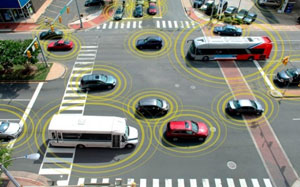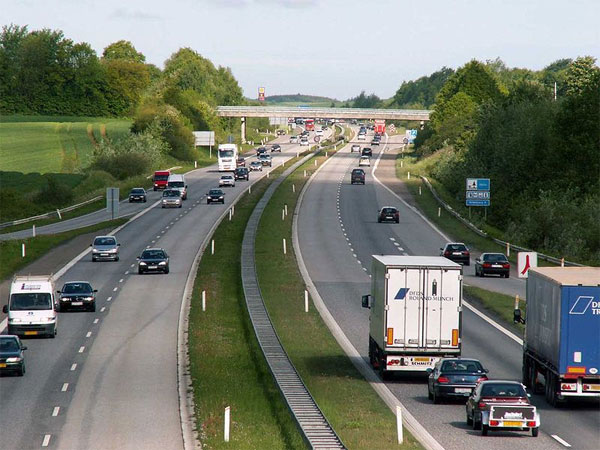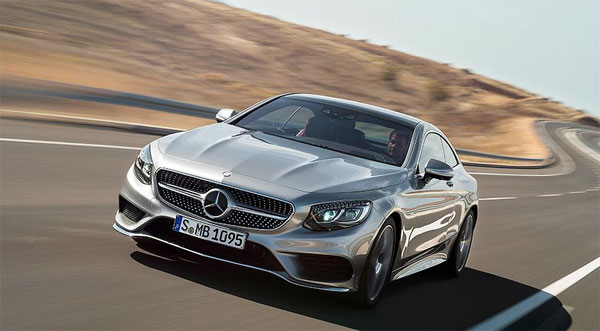Vehicle To Vehicle Comms “Here I Am” Says Your Car
 As a young girl, I never missed a single show of the “Knight Rider”. I loved Kit and his ability to talk to the Hoff and warn “Danger Ahead!”
As a young girl, I never missed a single show of the “Knight Rider”. I loved Kit and his ability to talk to the Hoff and warn “Danger Ahead!”
My first car, a Mazda 323 was witness to all my teenage idiosyncrasies.
As a vehicle owner, you’re probably used to talking to your car, but cars don’t seem to care much about what you say to them. Things are about to change and it may not be long before the new-age cars engage in conversations with their own kind – yes with other vehicles.
Vehicles of today are unlike their ancestors. They have become a lot smarter and safer over the last many years. If you buy a car today, it will likely come with several safety mechanisms that cars from 10 or even just 5 years ago didn’t have.
Image by cato.org
Safety Measures in Vehicles
There are all sorts of apps that tell you where you’re going and how you’re driving. Many cars are already connected to computer systems, making driving safer and comfortable. You can now spot motorway traffic jams, calculate delays, find alternative routes, learn where you can or cannot get off the motorway and a lot more.
Amidst all this, research has been going on for years to look into the possibility of creating effective crash avoidance systems. There have been prototypes developed and demonstrated with applications that focus on the various critical crash scenarios: emergency brake light warning, lane change warning, collision warning, blind spot warning, control loss warning and many more.
The consensus is that the above can be achieved by providing communication capabilities to vehicles and that’s just want the National Highway Traffic Safety Administration (NHTSA) has decided to do.
It has announced the requirement of new technology that gives cars the ability to communicate with each other directly. NHTSA stated that there has been a positive response for this technology – Vehicle to Vehicle communication or V2V for short.
How Does V2V Work?
V2V is literally, vehicles talking to each other. This technology may make cars move like an organized flock of birds that don’t run into each other. But it may be a necessity as we have seen how impossible it is to weed out drivers who regard the speed limits as a weird suggestion and treat highways like their personal racetrack. Remember how a celebrity is reported to have turned Pine Street into a makeshift race track recently?
The fact is, avoiding accidents has become the norm and it happens so often that we lose track. The government might be thinking it’s time to step in and save people.
 For example, when on the road in your car, you’re the one responsible for reacting and applying brakes if you see a car stopping ahead or slowing down. What if you don’t see it coming for some reason?
For example, when on the road in your car, you’re the one responsible for reacting and applying brakes if you see a car stopping ahead or slowing down. What if you don’t see it coming for some reason?
V2V communication is a wireless network that allows vehicles to send messages informing each other about what’s happening with them on the road. They will exchange data about the speed at which they’re traveling, direction, braking, loss of stability and location. This technology uses dedicated short-range communications (DSRC), a standard recognized by the likes of ISO and FCC.
This would be a mesh network, where every car and traffic signal gains the ability to send and receive signals. Traffic conditions from as far as a mile ahead would be gathered, which allows enough time even for the most distracted of drivers to take their foot off the gas pedal.
For example, when the driver in the car ahead of you applies brakes, that car would automatically send an electronic signal to all the cars around it.
The first generation of V2V systems is expected to just warn the driver – without taking control of the vehicle. It might be in the form of a red light flashing in the instrument panel, or like signals, the light would turn amber first and then red to indicate getting closer to danger. It might even tell us the direction and where exactly the threat is.
After the first stage, the system is expected to improve by allowing the vehicles to automatically brake or steer around obstacles and eventually get into the league of self-driving cars.
Current Trials
In August 2012, around 3,000 retrofitted test cars or prototypes have been tested – broadcasting their position, speed of travel, direction to other vehicles, receiving signals from other vehicles in return – all of this over a Wi-Fi (like) network. Most prototypes are said to have reached a stage where the cars brake and steer around hazards.
A study sponsored by NHTSA looked at the different scenarios involved in crashes reported by the police and they took into consideration only healthy and unimpaired drivers. The study found that V2V systems can potentially reduce light-vehicle crashes by a whooping 81 percent and heavy-truck crashes by 71 percent.
Testing is also underway for another technology, V2I (Vehicle-to-infrastructure), where communication is between the vehicles and roadways – ex. signals. The idea is to use both V2V and V2I in combination to reduce the potential for all kinds of crashes by 81 percent.
The Pre V2V Era
If all this testing proves successful, the U.S. government could impose a mandate for the inclusion of V2V systems in all new vehicles.
In this pre V2V era, the Mercedes-Benz S-Class is already able to virtually drive itself. It has sensors and additional radar units that tell it when to stop or stay away from pedestrians and stopped cars by steering around them. If a car comes into its lane, the Benz moves to the far side of the lane. The rear-facing sensors also let the car know if panic braking will impact the car behind.
The entry of cars that talk to each other and share intelligence may not happen tomorrow, but the automotive sector is ripe for a change. NHTSA officials compare the potential life-saving importance of the V2V technology with seatbelts and auto safety features that have saved thousands of lives.
Worried about your personal information? The system would come with several layers of privacy protection. Information exchange only focuses on basic safety data and does not identity the vehicles concerned.


























